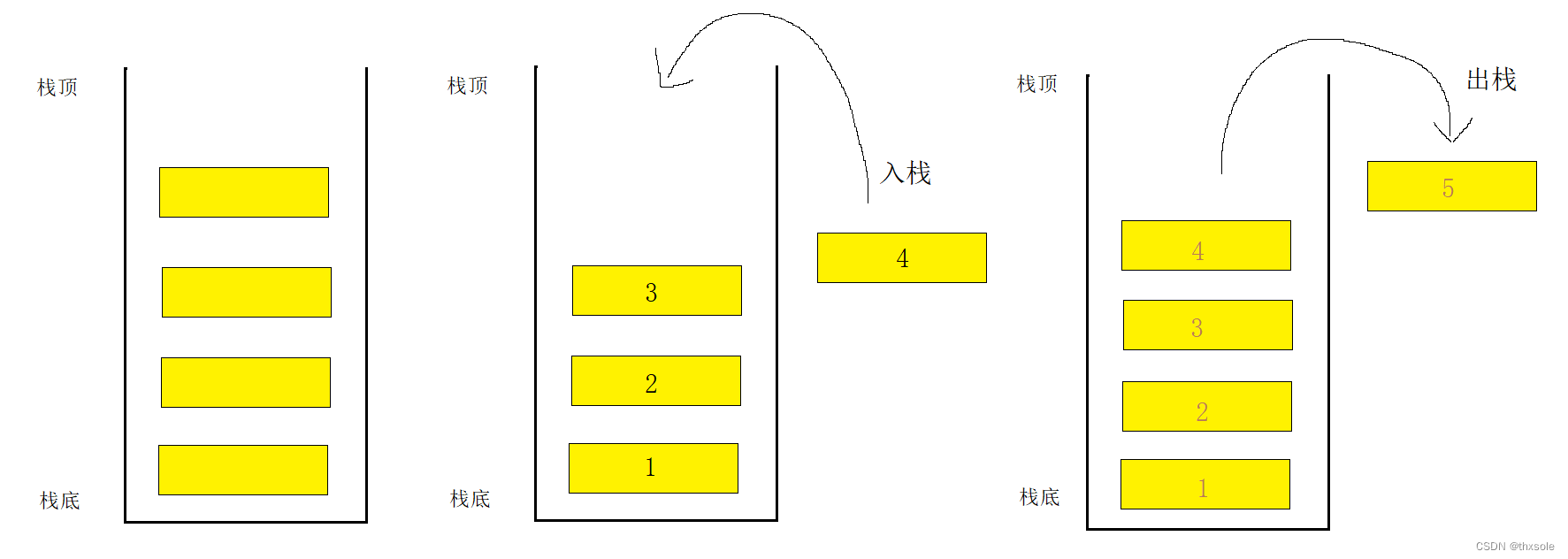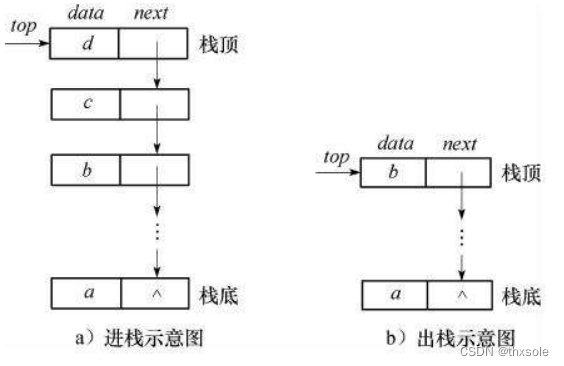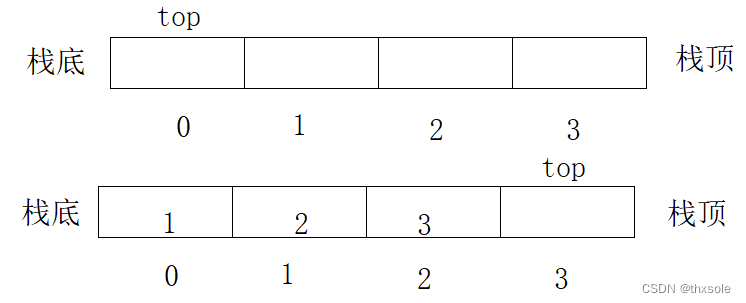一、什么是栈
1.栈的概念
栈:一种特殊的线性表,其只允许在固定的一端进行插入和删除元素操作。进行数据插入和删除操作的一端称为栈顶,另一端称为栈底。栈中的数据元素遵守后进先出LIFO(Last In First Out)的原则。
2.栈的结构
压栈:栈的插入操作叫做进栈/压栈/入栈,入数据在栈顶。
出栈:栈的删除操作叫做出栈。出数据也在栈顶。

栈的实现
我们今天使用顺序表来实现栈,因为顺序表在尾部插入的时候代价较小。


1.结构定义
typedef int STDateType;
typedef struct Stack
{
STDateType* a;
int top;
int capacity;
}ST;
2.栈的初始化
void StackInit(ST* pst);
void StackInit(ST* pst)
{
assert(pst);
pst->a = NULL;
pst->capacity = pst->top = 0;
}
3.压栈
每次在压栈前判断空间是否充足。在第一次给栈4个空间,后续逐步扩大2倍。
void StackPush(ST* pst, STDateType x);
void StackPush(ST* pst, STDateType x)
{
assert(pst);
if (pst->capacity == pst->top)
{
int NewCapacity = pst->capacity == 0 ? 4 : pst->capacity * 2;
STDateType* tmp = (STDateType*)realloc(pst->a, NewCapacity * sizeof(STDateType));
if (tmp == NULL)
{
perror("realloc fail");
return;
}
pst->a = tmp;
pst->capacity = NewCapacity;
}
pst->a[pst->top] = x;
pst->top++;
}
4.出栈
注意判断栈是否为空。
void StackPop(ST* pst);
void StackPop(ST* pst)
{
assert(pst);
assert(!StackEmpty(pst));//判断
pst->top--;
}
5.判断栈是否为空
top为0栈即为空。

bool StackEmpty(ST* pst);
bool StackEmpty(ST* pst)
{
assert(pst);
return pst->top == 0;
}
6.访问栈顶数据
top从0开始,注意要减1。

STDateType StackTop(ST* pst);
STDateType StackTop(ST* pst)
{
assert(pst);
assert(!StackEmpty(pst));
return pst->a[pst->top - 1];
}
7.求栈的大小

top从0开始,top为多少,栈的大小为多少。
STDateType StackSize(ST* pst);
STDateType StackSize(ST* pst)
{
assert(pst);
return pst->top;
}